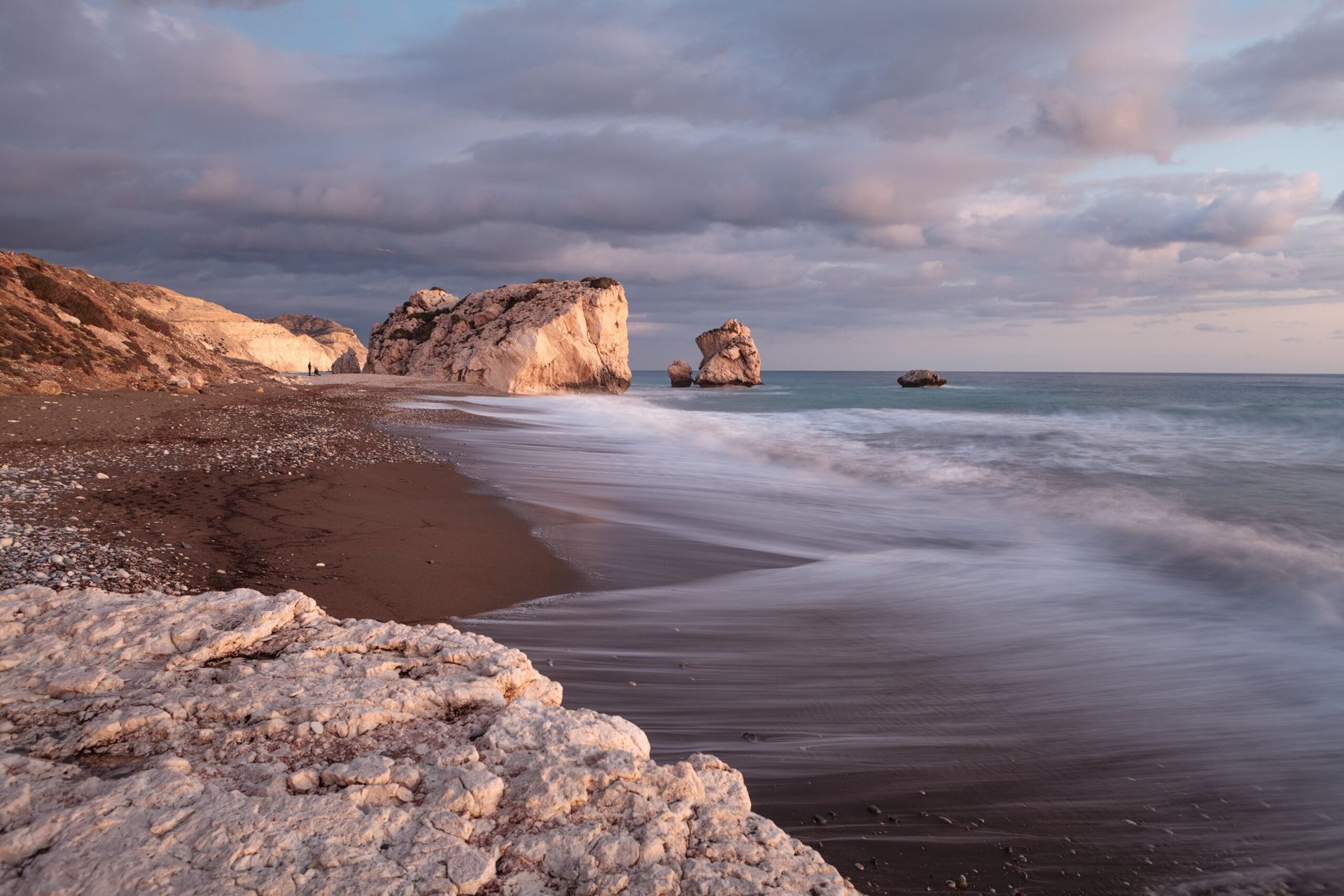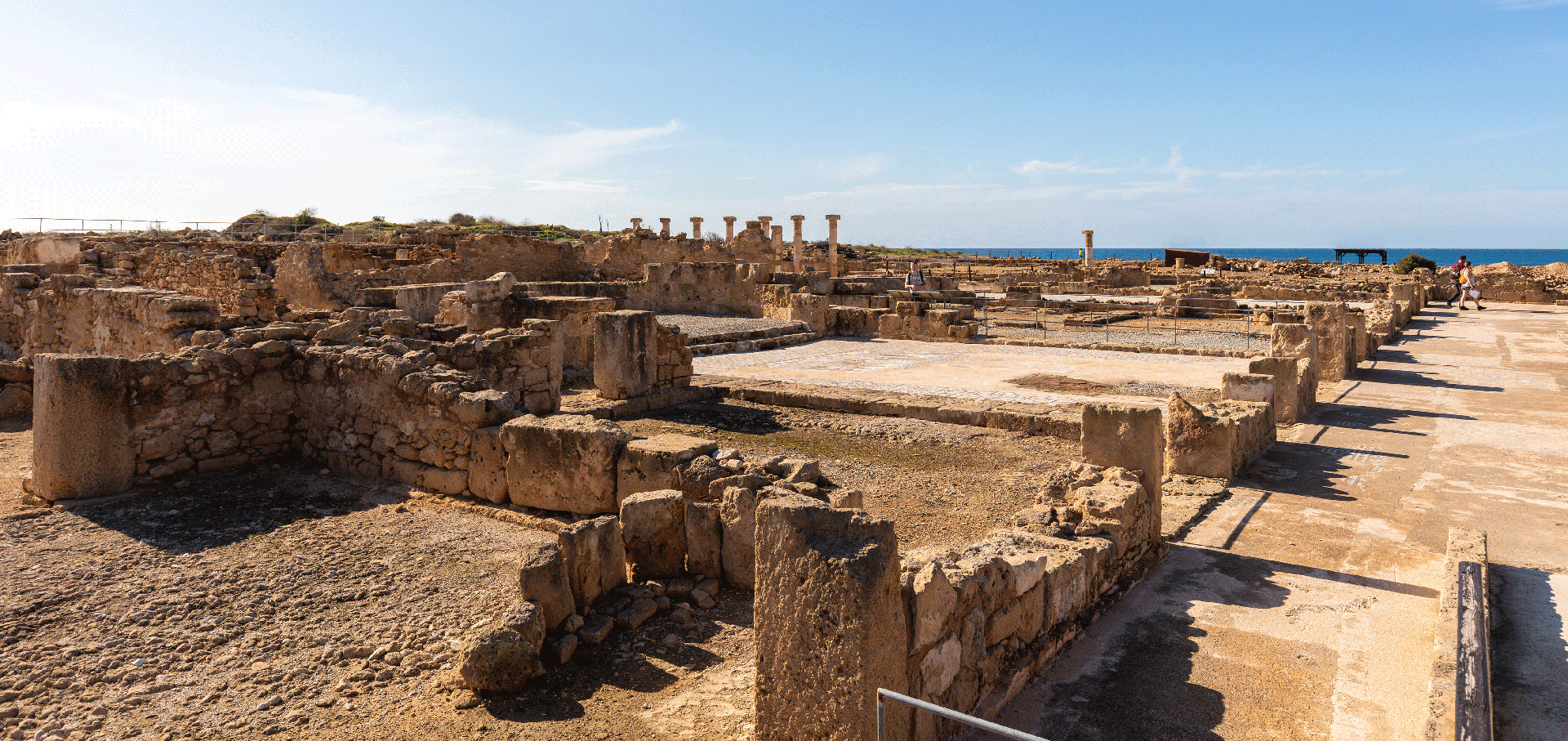Copper is so called because in ancient times it was extracted in abundance from the island of Cyprus. It is, then, one of those metonyms that consist of naming an object by the place it comes from (such as Rioja, sherry, Chantilly).
From Cobre 29 Spa we begin a series of trips on THE COPPER ROUTES, with a tour of the beautiful island of Cyprus, the island of Aphrodite or Venus, which enjoys the appetizing and elegant charm of discretion.
The Romans had a term with a meaning that was not too precise: “ aes” , with which they generically named the metallic, or the mineral from which it is extracted, or sometimes a precise metal, such as Copper and its alloys with zinc (the brass) or with tin (bronze). It also served them to designate certain objects made of these materials (another metonymy), especially money. In order to remedy the ambiguity, when they wanted to refer unequivocally to Copper, they added the adjective “Cyprius” ('from Cyprus'), due to the importance that the copper deposits of this island had in the Mediterranean world. Its name remained, then, as “ aes Cyprium” ('the Cypriot metal'). That's where the Latin word comes from .cuprum” , and from this our noun Copper, and the chemical derivatives cuprous and cupric.
In Antiquity, the mythological protector of Copper was the goddess Aphrodite or Venus . It is said that she, newly born from the waters of the sea, was taken by the Zephyrs precisely to the coast of Cyprus, where she was welcomed by the Seasons (the Hours), a scene painted in the famous painting by Botticelli. The Hours dressed her and led her to the abode of the gods, and the island was therefore consecrated to the goddess, one of whose nicknames is Cypria , 'the Cypriot'. It is also said that when she felt looked at and admired, she wanted to know her reason and Venus asked for an object in which she could see herself reflected. She was given a sheet of Copper, and she so satisfied the vision of herself that he gave her metal, that she made herself a mirror out of it.
Today, and after 3 millennia, in Cyprus, the easternmost enclave of the West in the Mediterranean, the often-repeated cliché of qualifying it as "the great unknown" is fulfilled. And it is that this island, beautiful, authentic , enjoys the sweet and elegant charm of discretion. No stridency, no outburst. All soft, friendly, familiar. And isn't that precisely what we look for when traveling?
Geographically speaking, Cyprus is just another Greek island, but it is an independent country whose inhabitants, the sons of Aphrodite, are proud to be, they say, older than Greece itself .
The truth is that today in the Republic of Cyprus the Greek influence is total. And not only from a political point of view. They speak (later, they think) in Greek, they pray in Greek and the flag with the white cross and five blue stripes has more presence than the local one, white with the silhouette of the island in Copper and two green olive branches.
Cyprus has been a crossroads for many cultures. Located at the eastern end of the Mediterranean, only 120 km. From Syria, the whole world has passed through here: Phoenicians, Greeks, Egyptians, Hittites...
In Cyprus, Aphrodite is everything . The goddess that the Romans would call Venus has been adopted as a national identity and even as a tourist mascot. The brochures say that Cyprus is "Aphrodite's Island", and here are the "Aphrodite Baths", the "Aphrodite Hills" resort, the "Aphrodite Hotel", the "Aphrodite" gas field, the "Aphrodite's Delights" which is a very sweet sweet similar to Turkish delight (lokum).
“Petra tou Romiou”, literally The Rock of the Greeks , is a pure Mediterranean coastal place with several rocks protruding from the sea and some stony coves. Here, they say there, "Aphrodite rose from the waves." You would have to ask Botticelli.

This place is near the city of Pafos (or Paphos), the ancient capital of the island. Like the town of Kouklia, where the ruins of the Sanctuary (of course!) of Aphrodite are preserved. Region in which Greek-Cypriots and Turkish-Cypriots live in perfect harmony, who abandoned the northern area after the occupation by Turkish troops and the division of the island in 1974.
In Paphos there is also one of the most important archaeological centers on the island, which preserves some excellent Roman mosaics and the sites of some absolutely spectacular ancient thermal baths (Roman baths) .
In Nicosia, the capital of Cyprus, the Archbishop's palace stands out , in Venetian style; the church of Panagia Chrysaliniotissa, erected according to the strictest Byzantine canons; the Omeriye Mosque, built on an Augustinian church; the Venetian walls, which have nothing to envy to those of Bergamo...
The coveted metal of Copper and a protected location made the Cypriot village of Hala Sultan Tekke one of the most important Late Bronze Age trading centers in the Mediterranean.
During the Bronze Age, Cyprus was the largest producer of Copper in the Mediterranean . This metal, alloyed with tin, formed the basis of bronze, which was used to cast tools, weapons, and jewelry before iron came into use.
Cyprus's central location in the eastern Mediterranean and a well-protected port created very favorable conditions for lively trade at Hala Sultan Tekke. Large quantities of imported goods in the form of ceramics, jewelery and other luxury items have been found from neighboring regions such as present-day Greece, Turkey, the Middle East and Egypt, as well as imports further afield from Sardinia, the Baltic Sea region, Afghanistan and India. These finds show that the city was one of the largest commercial centers in the period 1500–1150 BC and that it was of great importance during the early period of international trade in the area.
Following in the footsteps of other earlier peoples and attracted by the copper wealth of the island, the Mycenaeans arrived there around 1400 BC. C. Coming from Mycenae, one of the largest centers of ancient Greek civilization, they established their trading centers along the southern Cypriot coast.

With the disappearance of the Mycenaean power, Cyprus fell under the Egyptian orbit. In the archives of Tell el-Amarna, the capital founded by Pharaoh Akhenaten , correspondence has been found between the king of Alasia –identified by historians as the island of Cyprus– and the Egyptian sovereign, which reveals that he must have to exercise dominance over the island and surely over the entire eastern Mediterranean. As Cypriot tributes, the Egyptians received leather, copper and wood from the island.
Due to contact with these advanced civilizations, Cyprus entered history approximately around the year 1500 BC. C. On this date he invents his first writing system on clay tablets –of about fifty signs not yet deciphered–, which presents notable similarities with that of the linear writing tablets of the also Mediterranean island of Crete .
Three centuries later the Hellenization of Cyprus arrived, with the landing of the first Achaeans, coming from continental Greece, from the Peloponnese. Installed in the main Cypriot commercial centers, their powerful civilization will generate important cultural changes. The successive waves of Achaeans will impregnate Cyprus with Hellenism and complete its slow process of colonization.
The waves of invasions are not interrupted on the Isla del Cobre. After the Achaeans, it is the turn of the Sea Peoples, and later the Phoenicians, the Assyrians, the Persians, the Romans...
In AD 77, the Hellenistic cities of Cyprus were destroyed by devastating earthquakes. The Roman emperors Trajan and Hadrian made an important contribution to the rehabilitation of the cities, as well as the temple of Aphrodite in Paleapafos, as well as being interested in the construction of ports and communication routes. Christianity penetrated early, through Antioch, and in 431 the Council of Ephesus recognized the independence of the Church of Cyprus.
Actualmente y si bien es un Estado internacionalmente reconocido, solo controla dos tercios de la isla. El tercio restante (el norte de la isla) lo ocupó Turquía en 1974, instaurando la República Turca del Norte de Chipre. A este último territorio lo reconoce solo Turquía. En la isla también se encuentran las bases militares británicas de Acrotiri y Dhekelia. Chipre ingresó como miembro de las Naciones Unidas el 20 de septiembre de 1960.
En definitiva Chipre es uno de los destinos que más podría sorprendernos este mes de junio en el Mediterráneo. Sobre todo porque tiene un potencial increíble a través de su patrimonio, sus playas cristalinas, su clima de veranos extensos, su conexión con Europa.
And don't forget to bring back a loving “souvenir” or symbolic Copper amulet, inspired by Venus Aphrodite!
